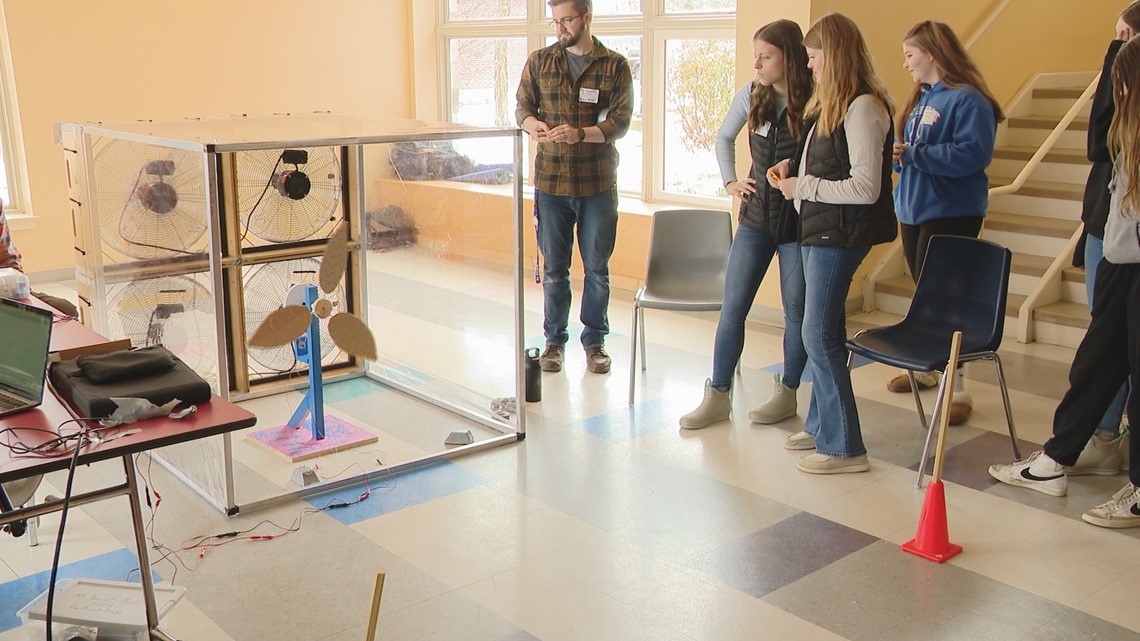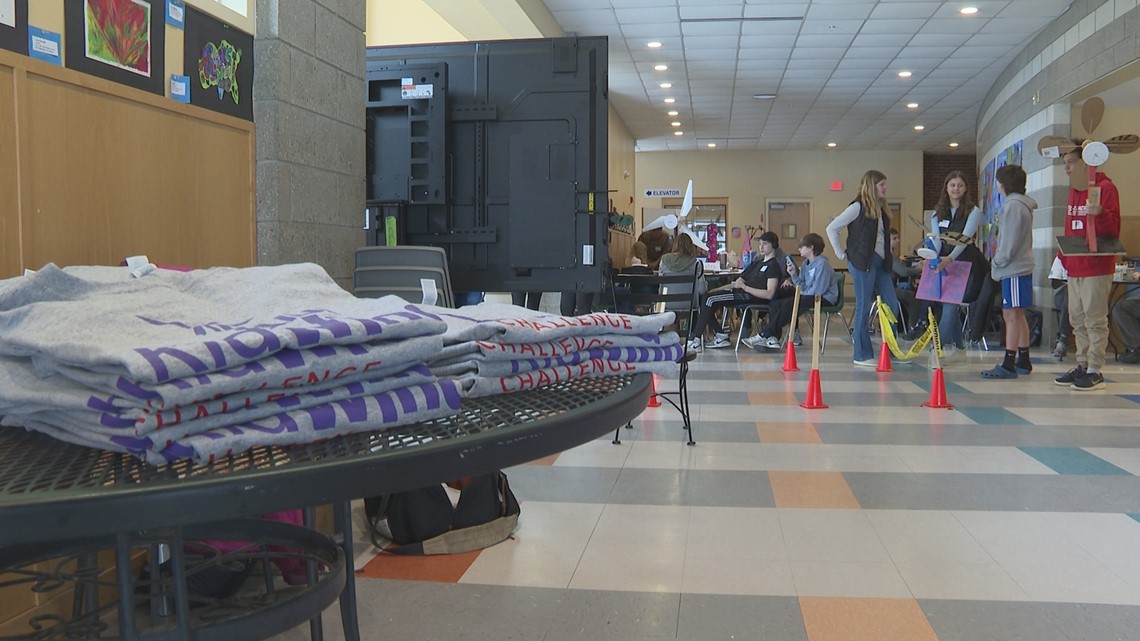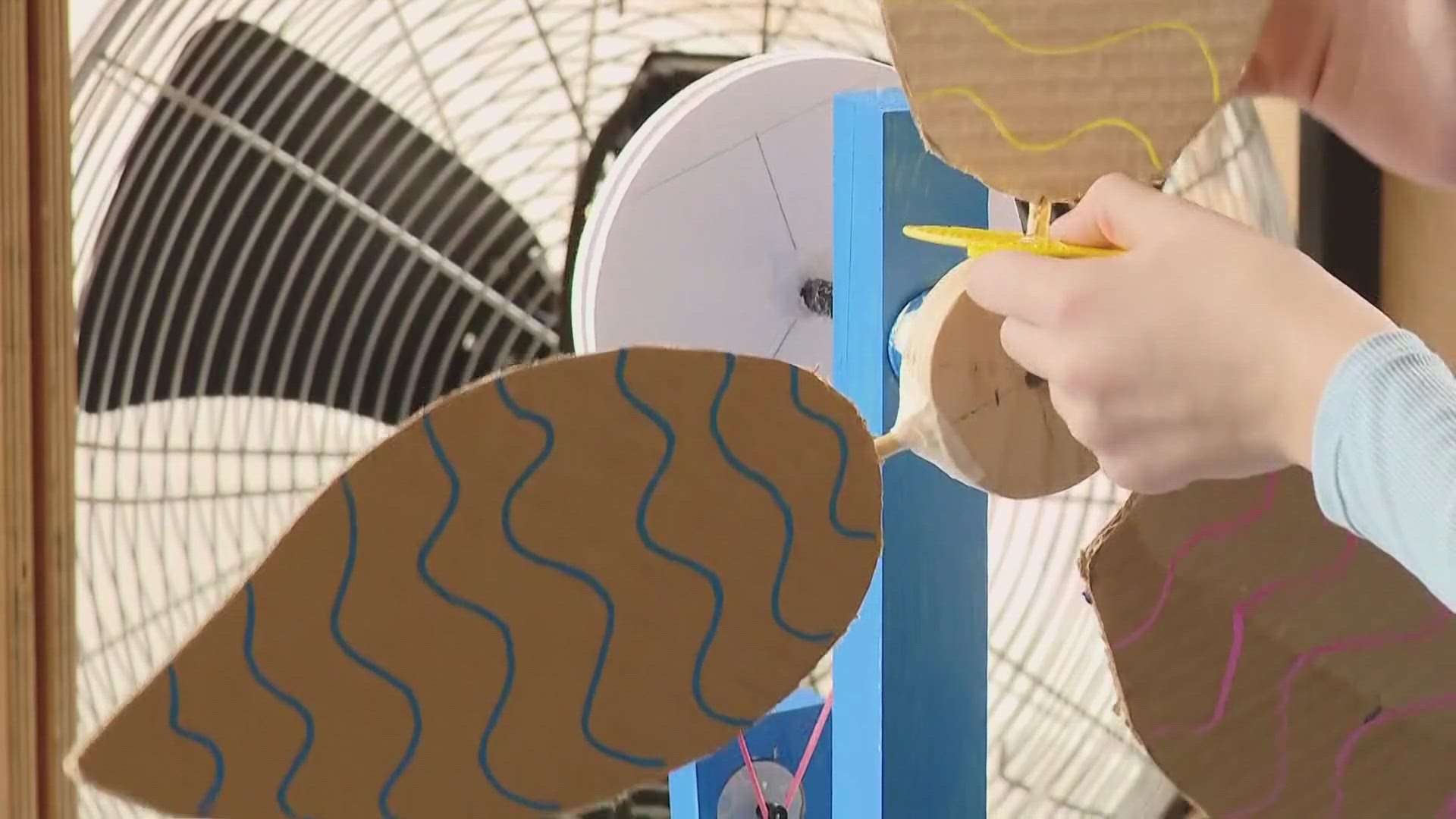TOPSHAM, Maine — Any time a Maine middle school student is able to learn outside of the classroom, they'll probably say it was a good day.
Avery Elliott and Haven Ruff, both eighth graders at Mt. Ararat Middle School, spent most of Wednesday working on a project they've been perfecting all month long.
The Topsham-based school hosted the Maine Middle School KidWind Challenge — which gives kids a hands-on learning experience with Science, Technology, Engineering, and Mathematics ( STEM) education. Student teams design, build, and test small-scale wind turbines all over the country and the world.
“It took a while to figure out what design we wanted and how it was going to work, to be able to spin," Ruff said during Wednesday's testing.
“And last night we figured out our generator wouldn’t spin and that was the problem," Elliot added.
Students from Mt. Ararat, Freeport, and Winslow middle schools were able to see how effective their model turbines were at producing wind power. Each team was able to test their turbines a few times, record their best score, and then meet with judges to talk about their design process.
For Elliot and Ruff, the time between each test gave them the chance to learn what worked, what didn't, and what changes needed to be made before the next go around.
Sandy Bickford is the STEM Educator at Mr. Ararat and wanted to host the challenge in person this year and reached out to other local teachers to see if their students would be interested.
“It’s just nice to know that other people think it’s important as well," Bickford said Wednesday. “And it’s a great project for engineering and fairly relevant with our environmental situation, our energy situation".
According to Maine Gov. Janet Mills' Energy Office: The state is required to have 80% of Maine’s electricity from renewable sources by 2030, and a goal of 100% by 2040.
Ultimately this means opportunities are increasing for Maine businesses and workers to get involved in renewable energy fields. As those opportunities grow, it's also vital the state has a skilled workforce ready to meet the demand.
"Maine has a very rich wind resource, both onshore in our northern counties and of course the gulf of Maine brings a tremendous opportunity to make our economy carbon neutral and our energy future assured," Stephen Nolet, the senior director of innovation and technology at TPI Composites said.
Nolet was also a judge for the event and was able to speak with students about their design process, their engagement, and their interest in renewable energy or STEM.
"And if one child comes out of this and becomes an engineer in renewable energy, I think my time was well placed," he added. “This is the future of our workforce."


The renewable energy industry is broad, Nolet added, so students with a wide range of skill sets could be well positioned to join a related career after school.
"It’s all synergist and important that this generation knows the value of renewable energy and the opportunities it affords," he said.
Even if the competing students aren't set on joining the renewable energy workforce, Bickford said Wednesday's challenge gave them experience in an interview setting with the judges, and could potentially spark more of an interest in STEM.
Two of Bickford's students won the Maine KidWind Challenge in 2023 and they all went to the world's competition in Colorado last spring.
“I think it helped expand their world a little bit and gave them the opportunity to see...to learn a little more about opportunities for jobs [and] travel," she added.


Danika Levasseur and Sidney Keleher were on last year's winning team. Levasseur helped with Wednesday's challenge as a high school student. After spending plenty of time in Bickford's STEM lab in middle school, Levasseur spends a few days a week at Region Ten Technology School and wants to be a welder in the future.
Teams from Winslow Middle School won both the first and second-place awards at Wednesday's competition.

